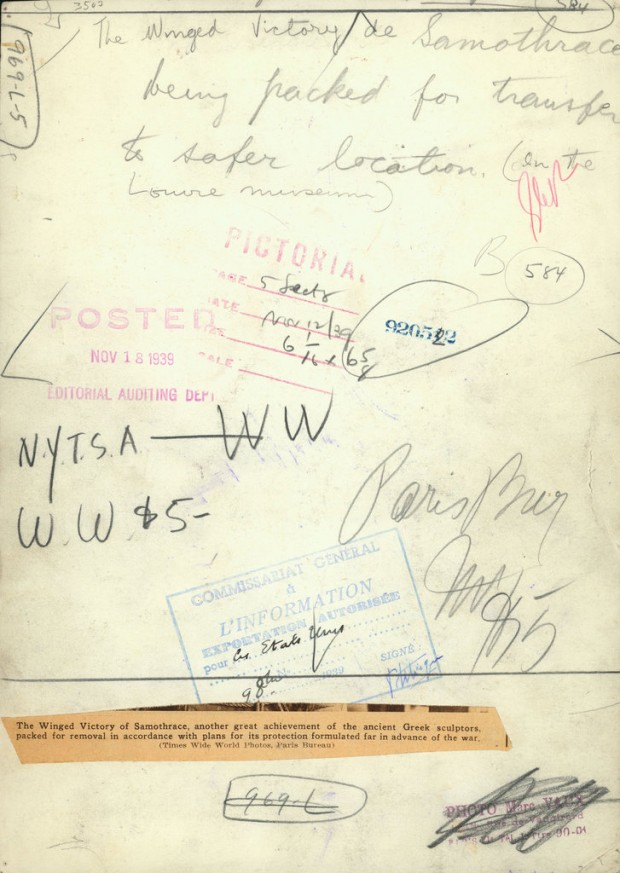An iconographic and text archive related to communication, technology and art.
☛ The Lively Morgue: “The Winged Victory of Samothrace, another great achievement of the ancient Greek sculptors, packed for removal in accordance with plans for its protection formulated far in advance of the war.” photo by The New York Times (unknown author), November 12, 1939.
The photo shows the famous Greek sculpture while it’s been relocated for safety during war time. An article from Boston.com provides more details:
Another of the Louvre’s Greek masterpieces, the 2d century BC “Winged Victory of Samothrace,” is shown entangled in a web of ropes and dangling from an oversized pulley. Another photo shows the a massive crate containing the marble statue being wheeled down a staircase on specially installed wooden planks.
“The principle was that the artwork had to be gotten away from combat zones and strategic centers,” said the exhibition’s curator, Guillaume Fonkenell, adding that the pieces weren’t hidden from the occupying Nazi forces.
“The Germans were perfectly aware of the different places the artwork was being stored,” he said. Most of it was kept at chateaux, whose owners volunteered to safeguard the pieces as a way of preventing their properties from being requisitioned by the Nazis, Fonkenell said. (read more)
The sculpture now resides at the Louvre Museum, in Paris. The Louvre website has more details about the historical purpose of this monumental piece of art sculpted in marble sometime around 190 BC:
This exceptional monument was unearthed in 1863 on the small island of Samothrace in the northwest Aegean. It was discovered by Charles Champoiseau, French Vice-Consul to Adrianople (Turkey). The goddess of Victory (Nike, in Greek) is shown in the form of a winged woman standing on the prow of a ship, braced against the strong wind blowing through her garments. With her right hand cupped around her mouth, she announced the event she was dedicated to commemorate. (read more)

The Lively Morgue is a great initiative by The New York Times. It’s purpose is to facilitate comprehensive access to its gigantic archive of images (read more about the project). The website is actually a distinct Tumblr blog which presents several photographs weekly. Each photos is shown alongside its reverse side which display
how often the photo was used, in what context and at what size; the information provided by the photographer; and the information that made it into the published caption.
Here’s the reverse side of the Samothrace picture taken by The New York Times:

[UPDATE – May 8, 2012] Tumblr’s Storyboard just published a featured article about The Lively Morgue’s history: “The Morgue Lives!” by Jessica Bennett, May 6, 2012. For the occasion, they also produced a short video “Inside the New York Times ‘Lively Morgue’” (by Jessica Bennett & K. Ryan Jones, in partnership with WNYC). Watch it below or directly on Vimeo.
- By Philippe Theophanidis
- on
- ― Published in Art, Communication, Photography
- Tagged: Greece, New York Times, Samothrace, sculpture, victory, war, wings, woman

